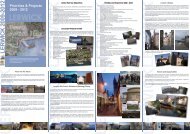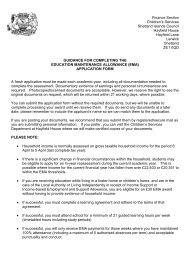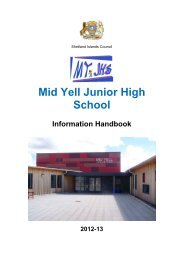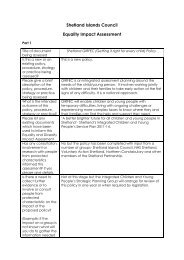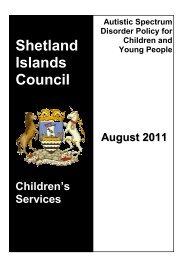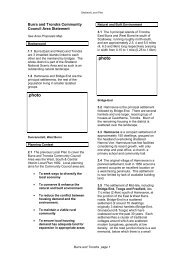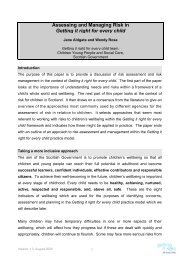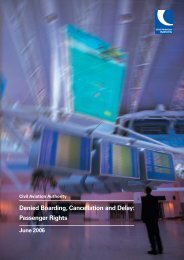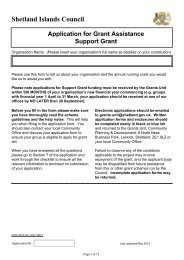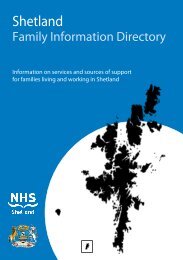Shetland Local Landscape Designation Review: Final Report
Shetland Local Landscape Designation Review: Final Report
Shetland Local Landscape Designation Review: Final Report
Create successful ePaper yourself
Turn your PDF publications into a flip-book with our unique Google optimized e-Paper software.
Subjective description or personal response to the landscape.<br />
3.22 This approach draws on the SNH methodology employed in the definition of<br />
special qualities of National Scenic Areas. 4 It seeks to draw out the key<br />
characteristics of an area, which form part of the justification required for<br />
each candidate <strong>Local</strong> <strong>Landscape</strong> Area. The detailed field survey was therefore<br />
an iterative process, designed to verify and expand on the initial stage of the<br />
evaluation. An example of the second-stage field survey form is included in<br />
Appendix 1.<br />
Identification of Candidate <strong>Local</strong> <strong>Landscape</strong> Areas<br />
Analysis of the Area of Search<br />
3.23 The evaluation process looked at each LCU as a whole, but did not seek to<br />
identify variations within these units. The quantitative scoring of LCUs, while<br />
providing a sound basis for selecting the most valuable areas, does not<br />
correlate directly to the definition of candidate <strong>Local</strong> <strong>Landscape</strong> Areas.<br />
3.24 Significant variations in landscape quality occur across LCUs, and as such may<br />
not be brought out by an evaluation process that looks at LCUs as a whole.<br />
Potentially, high-scoring LCUs may contain areas of lower quality, while lower<br />
scoring LCUs may contain features of value. The potential for parts of<br />
neighbouring LCUs combine to form valuable assemblages is also recognised.<br />
Because of these variations, the wholesale adoption of high-scoring LCUs as<br />
candidate <strong>Local</strong> <strong>Landscape</strong> Areas would have been inappropriate.<br />
3.25 In order to refine the Area of Search, a more detailed qualitative analysis was<br />
carried out, to enable a move away from the pre-defined LCUs, towards<br />
potential candidate <strong>Local</strong> <strong>Landscape</strong> Areas.<br />
3.26 This analysis drew on the non-ranked criteria, and on material gathered<br />
during both stages of the field survey work. The following questions were<br />
explored in relation to each of the LCUs in the Area of Search.<br />
<br />
<br />
Which parts of the LCU perform best against the evaluation<br />
criteria?<br />
This question seeks to identify variations in relative landscape quality,<br />
noting which specific locations contribute to the highest rankings. This is<br />
particularly focused on the weighted criteria, and also draws on variations<br />
noted under the non-ranked consistency criterion.<br />
Are there parts of the LCU that contribute to important<br />
composite landscapes?<br />
This question was considered with reference to the non-ranked<br />
relationships criterion, and seeks to identify where adjacent landscapes of<br />
differing type combine to create valuable groupings. It also identifies areas<br />
which may form an important setting to a high-quality landscape. This<br />
included the consideration of areas outside the Area of Search, where<br />
these contributed to the integrity of potential candidate <strong>Local</strong> <strong>Landscape</strong><br />
Areas.<br />
4 SNH (2008) Guidance For Identifying The Special Qualities Of Scotland’s National Scenic Areas.<br />
<strong>Shetland</strong> Islands <strong>Local</strong> <strong>Landscape</strong> <strong>Designation</strong> <strong>Review</strong><br />
Land Use Consultants<br />
<strong>Final</strong> <strong>Report</strong> 14 October 2011



